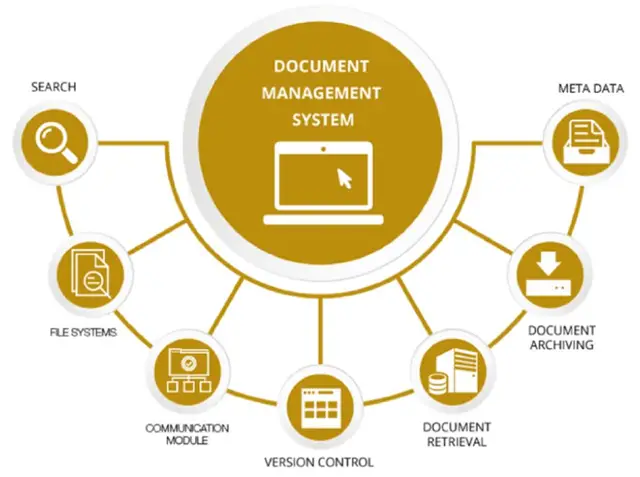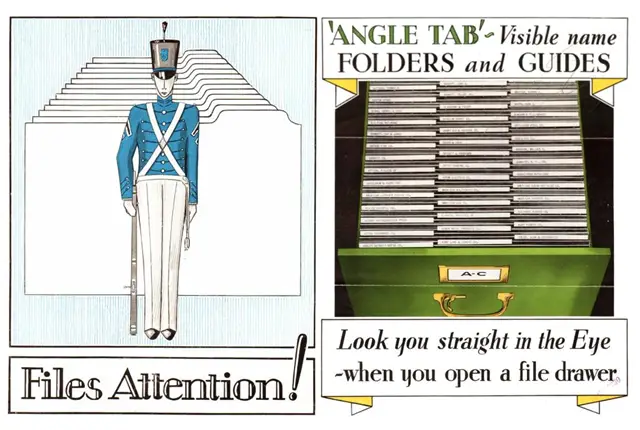A Brief History, Pros and Cons, and How to Choose the Right Provider for EDMS
In the business world, time is money. This is especially true for those that need to manage a great deal of paperwork. For years, businesses have been looking for a way to manage their documents electronically, and that is where electronic document management systems (EDMS) come in.
In the present day and age, almost everything is done electronically. From paying your bills to filing your taxes, you can do it all online. This has led to the development of Electronic Document Management Systems (EDMS), which are software programs that allow businesses to manage their electronic documents. EDMS can help businesses save time and money by making it easier to store, manage, find, and track their documents electronically.
What is Electronic Document Management Systems (EDMS)? How does it work? What benefits does its implementation bring to your business? In this article, we’ll answer all of those questions and more. We’ll start with a brief history of EDMS and then move on to discuss what it entails. After that, we’ll take a look at the pros and cons of EDMS so that you can decide whether or not it’s the right thing for your business. Finally, we’ll wrap things up with some closing thoughts on the topic.

https://xtranetindia.com/wp-content/uploads/2020/05/DMS1.png
What Is an Electronic Document Management System (EDMS), and How Does It Work?
An EDMS is a piece of software that helps businesses manage the creation, storage, and control of digital documents. The goal of an EDMS is to give organizations a way to securely store and track all their important business documents in one place. This can include things like financial records, customer contracts, employee files, and more.
An EDMS can be used to track who has accessed a particular document, when they accessed it, and what changes were made. This information can be very valuable for businesses, as it can help them keep track of their most important documents and ensure that they are being used correctly.
There are many different types of EDMS software programs available on the market today. Some of the most popular include:
Each of these EDMS programs offers different features and benefits, so it’s important to choose one that will best meet the needs of your organization.

Source: https://placesjournal.org/article/the-filing-cabinet-and-20th-century-information-infrastructure/?cn-reloaded=1 (From a brochure for Yawman and Erbe’s 800 Series. [Courtesy of the Smithsonian Libraries, Washington, D.C.])
A Brief History of Electronic Document Management System (EDMS)
In order to understand what EDMS is, we must first take a look at the history of document management systems. The concept of an EDMS dates back to the early days of computing when large organizations began storing their documents electronically. The 1990s was the time when the first commercial EDMS products hit the market. However, modern digital systems are based on much more primitive physical document management systems like the vertical file system, so let’s start with them.
The first documented use of a document management system dates back to the late 1800s. At that time, businesses used large, wooden filing cabinets to store their documents. Edwin Grenville Seibels invented the vertical file system in 1898, which helped businesses organize their documents more efficiently. This method of document management was the standard for document storage almost everywhere for the majority of the twentieth century.
In the 1970s, new technologies began to emerge that would change the way businesses managed their documents. The first personal computers were introduced, and office workers began to use them for tasks like word processing and spreadsheets.
In the 1980s, the first electronic document management systems were introduced. These early systems allowed businesses to store their documents electronically and track who was accessing them. However, these systems were very expensive and only used by large organizations.
In the 1990s, the cost of EDMS systems began to decrease, and they became more widely available. This caused an increase in the popularity of EDMS systems as more businesses began to see the benefits of storing their documents electronically.
The popularity of EDMS grew across many industries in the early 2000s. The healthcare industry was especially eager to adopt EDMS on a large scale as the need to store and track patient medical records became more important. This type of EDMS is now known as Electronic Health Records (EHR). EHR development is now much more affordable for any kind of medical facility.
Today, EDMS systems are used by businesses of all sizes in a variety of industries. They have become an essential part of many organizations’ document management processes. An EDMS is most commonly used by businesses in the following industries:
- Healthcare
- Retail
- Manufacturing
- Banking and Financial Services
- Insurance
- Government
Each of these industries has different document management needs. There are many different types of EDMS systems available on the market today. The system can be tailored to meet the specific needs of any organization.

https://unsplash.com/photos/n8Qb1ZAkK88
What Benefits Can You Expect from EDMS for Your Business or Organization?
EDMS has become so widespread for a reason. There are many benefits of using the system for your business or organization. Here are some of the most common of them:
- Saves time and money: By storing all their important documents in one place, businesses can avoid printing out copies of these documents or searching for them in physical filing cabinets.
- Improves security: With an EDMS, businesses can control who has access to which documents. This helps to keep sensitive information confidential.
- Increases efficiency: An EDMS can help businesses to automate their document management processes. This can increase efficiency and productivity.
- Improves compliance: By using an EDMS, businesses can ensure that they are compliant with all relevant regulations.
- Provides disaster recovery: In case of a natural disaster or other emergencies, an EDMS can help businesses to recover their lost documents.
There are a lot of other benefits that businesses can expect from EDMS. These are just a few of the most important benefits. An EDMS can help businesses to improve their document management processes in many ways. If you are looking for a way to improve the efficiency of your business, an EDMS could be the perfect solution.
What are the Known Disadvantages of EDMS?
Like any technology, there are a few known cons of EDMS. Here are some of the most common problems that businesses have with EDMS:
- Implementation can be costly: One of the biggest problems with EDMS is that it can be expensive to implement. You’ll have to purchase the software and hardware needed to run the system. They may also need to hire staff to manage the system.
- Requires training: Another problem with EDMS is that it requires training. You’ll have to train their staff on how to use the system. This can be a time-consuming and expensive process.
- Can be complex: EDMS can be complex, and businesses may need to hire consultants to help them implement the system.
- May not be compatible with other systems: EDMS may not be compatible with the other software systems that businesses use. This can make it difficult to integrate the system into the business.
Despite these problems, EDMS is still a popular choice for businesses. The benefits of EDMS outweigh the drawbacks for many businesses. If you are considering implementing EDMS in your business, it is important to weigh the pros and cons carefully.
How to Choose the Right EDMS for Your Needs?
Now that you know more about EDMS and the benefits it can offer your business, you may be wondering how to choose the right EDMS for your needs. Here are a few factors to consider when choosing an EDMS:
- The size of your business: One of the most important factors to consider is the size of your business. You will need to choose an EDMS that can accommodate the number of users you have.
- The type of documents you need to manage: Another important factor to consider is the type of documents you need to manage. You will need to choose an EDMS that can handle the types of documents you use.
- Your budget: One final factor to consider is your budget. You will need to choose an EDMS that fits within your budget.
It is important to take the time to choose an EDMS that is right for your business. With the right EDMS, you can improve the efficiency of your document management processes and save time and money.

https://unsplash.com/photos/unRkg2jH1j0
The Cost of Implementing and Using an EDMS
An EDMS can be a significant investment for an organization, and the cost can vary widely depending on the size of the business and its needs. The cost of an EDMS also depends on whether the organization chooses to purchase a commercial off-the-shelf (COTS) product or develop its own system.
If an organization decides to purchase a COTS product, there are many things to consider in addition to the initial price tag. Organizations need to take into account the costs of hardware, software, installation, training, customization, and maintenance when considering a COTS product. Additionally, many COTS products require organizations to sign licensing agreements, which can add significant costs over time.
Organizations that decide to develop their own EDMS need to consider the same things: the costs of hardware, software, installation, training, and maintenance. They also need to factor in the cost of hiring staff with the necessary skills to develop and maintain the system. Additionally, organizations must consider the opportunity cost of developing their own system instead of purchasing a COTS product.
The cost of an EDMS is a significant consideration for any organization considering implementing such a system. However, EDMS can provide many benefits that can outweigh the initial investment. When making a decision about whether to implement an EDMS, organizations should carefully weigh all of the cons and pros before making a decision.

https://unsplash.com/photos/774sCXD0dDU
Questions to Ask When Choosing an EDMS Provider
When considering an EDMS provider, one of the most important questions to ask is the cost of the system. The cost can vary drastically depending on the provider and the features of the system. It is important to ask providers about all of the costs associated with using their system, including licensing fees, maintenance fees, and installation fees.
Additionally, it is important to ask providers about their support services. Many providers offer training and support services that can help organizations get the most out of their EDMS. It is important to ensure that the provider offers the services you need to ensure a successful implementation of the system.
Finally, it is important to ask about the provider’s track record. Ask for references from past clients and contact these clients to get their feedback about the system and the provider. That’s how you can get a better understanding of what to expect from the provider and how they can help your business meet its document management needs.
The electronic document management system is a great tool that can help your organization manage its documents more effectively. By asking the right questions to providers, you can find the one that will offer the features you require at a price you can afford. And then, you just need to implement the EDMS the right way in your organization.
Closing Thoughts on the Topic
An EDMS can be a great investment for an organization. It can help organizations save time and money by improving the efficiency of their document management processes. Remember that an EDMS is a significant investment, and organizations should carefully weigh all of the costs and benefits before making a decision about whether or not to implement such a system.
Related